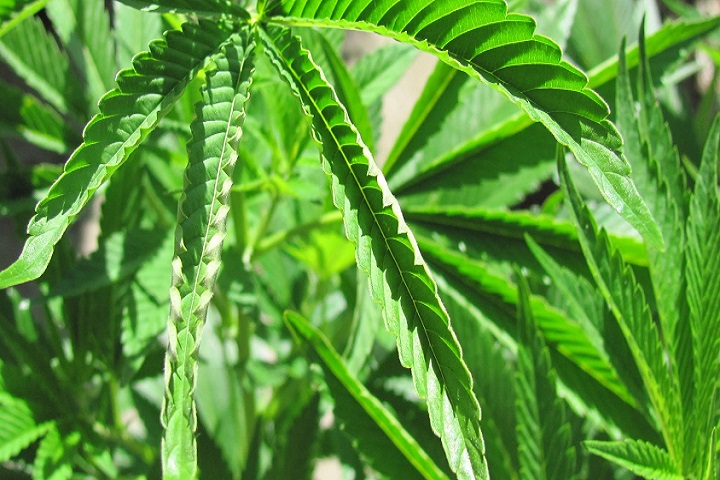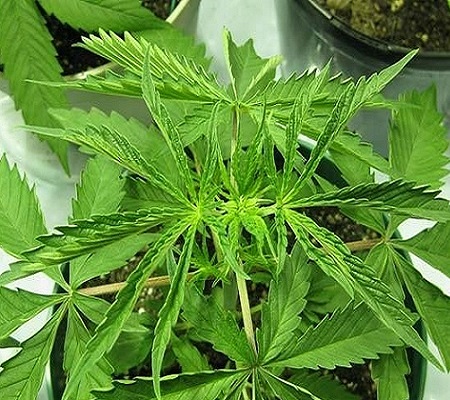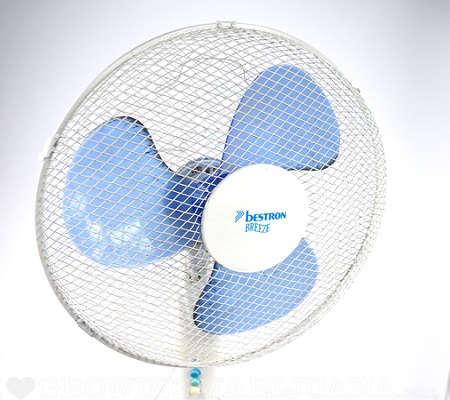
Heat Stress And Your Marijuana Plants
Heat stress happens both in hot and cold conditions and if left untreated it can seriously impact the health of your plant as well as the success of your harvest. It’s, therefore, crucial that you understand the dangers of heat stress and how to prevent and treat it.
Heat stress facts
Heat stress symptoms
Treatment
Heat stress facts

Marijuana plants thrive when the temperature of the environment around them is somewhere between 70 and 75 degrees Fahrenheit during ‘daylight’, and between 50 and 60 degrees Fahrenheit when it is ‘nighttime’. If you are a grower that likes to add extra carbon dioxide, then a higher temperature (a bit below 80 degrees Fahrenheit) is better for your plants.
Marijuana plants require the heat to be all around them, including the air and the floor both. It is easy to forget about the temperature at the floor, but if there is a significantly different temperature coming from the ground, it will adversely affect your marijuana plants. If the floor temperature is right, your plants will be happy and capable of dealing with the occasional cold temperature better.
Download my free marijuana grow guide and learn how to grow like a pro
When it comes to cold, problems first begin arising when the nighttime temperature drops lower than 60 degrees Fahrenheit for more than just a few days in a row. This is especially true if your plants are blooming. If your marijuana plants are an outdoor strain, then they should be able to survive all the way down to 50 degrees Fahrenheit, although this is far from ideal. Colder temperatures slow growth, and if the temperature gets lower than 40 degrees Fahrenheit, then you will start to see the visual damage.
Heat also can hurt your marijuana plants, especially if they are young. Plants with well-established root systems are better able to handle heat waves than younger plants with small root systems. Additionally plants in their vegetative period will end up with longer stems if the temperatures are too high; while plants that are blooming will have less dense buds.
Heat stress symptoms

If your plants have been undergoing temperatures that are too cold, the resulting symptoms will likely include noticeably slower growth and a smaller yield. If you are a new grower who isn’t fully accustomed to what is normal for your plants, however, you may not find these symptoms to be easy to identify.
If temperatures are too high for your marijuana plants, a different set of symptoms will begin to arise. You will see visible changes in the buds nearest to the lamps, for instance, which will single out the problem as having to do with heat rather than light. They will appear bleached in color and stretched out. Alternatively you may notice that the tips of your plants appear burnt. You may also see yellowing or the appearance of brown spots. All of these heat-related symptoms are most likely to occur when the grower is not paying close attention to the heat conditions of their grow room. More about heat stress symptoms in my free grow bible.
Treatment

Cold
For temperatures that are too cold for outdoor plants, there are certain steps you can take to warm up the conditions around your plants. For instance, try employing gas patio heaters to run during the night in order to achieve the optimum temperature of 60 degrees Fahrenheit. You can also cover up the entire garden with a plastic cover, such as polyethylene plastic.
If you are growing your marijuana plants indoor, however, you will need to approach things differently. Try adding in an electric heater or CO2 generator. Another option is to recirculate hot water through by using a water heater.
Heat
For outdoor setups that are too hot, try getting micro-sprayers. They will decrease the overall temperature by as much as 30 degrees Fahrenheit, making the environment much more hospitable for marijuana plants. Container-grown plants are going to require extra care since heat can have a stronger effect on them. One way to ease the heat exposure of these plants is to move them into the shade so they are not being hit with direct sunlight.
If the heat in your indoor grow room is too hot, increasing the ventilation can help lower the temperature and the negative effects it has on your plants. Either a fan or exhaust system should do the trick, with careful consideration of the fact that a carbon scrubber should be used to avoid pumping pungent smells outside of your grow room. Air conditioning can also work to cool temperatures efficiently, as can lights that are kept cool either from air or water, thus lowering the amount of heat that is contributed from the lamps themselves.
Sometimes indoor-grown marijuana plants suffer from heat stress because of their close proximity to the lights. If this is the case, moving the lights further away from the plants will solve the issue quickly. Other options including converting to air-cooled or water-cooled lights that also use reflectors.
Once you have begun treating the problem and your plants are starting to recover, speed up this process with seaweed kelp, which also prevents heat stress from affecting your plants in the future.
Thanks for reading. Please leave comments or questions below and don’t forget to download my free grow bible.